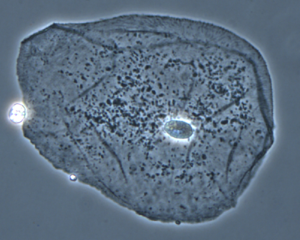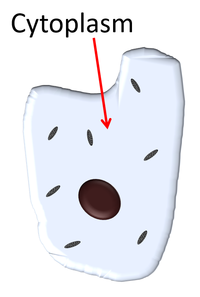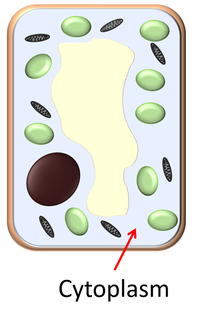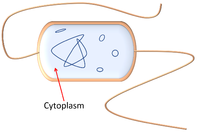Difference between revisions of "Cytoplasm"
| Line 47: | Line 47: | ||
|[[File:BacteriaCellCytoplasm.png|center|200px]] | |[[File:BacteriaCellCytoplasm.png|center|200px]] | ||
|} | |} | ||
| + | |||
| + | ===References=== | ||
| + | ====AQA==== | ||
| + | |||
| + | :[https://www.amazon.co.uk/gp/product/1782945563/ref=as_li_tl?ie=UTF8&camp=1634&creative=6738&creativeASIN=1782945563&linkCode=as2&tag=nrjc-21&linkId=9a1d023a374038e6072f33c4f3cf808b ''Cytoplasm, page 11, GCSE Biology; The Revision Guide, CGP, AQA ''] | ||
| + | :[https://www.amazon.co.uk/gp/product/1782945598/ref=as_li_tl?ie=UTF8&camp=1634&creative=6738&creativeASIN=1782945598&linkCode=as2&tag=nrjc-21&linkId=ad276ad49df77ab4b40ab4fd0fe09828 ''Cytoplasm, page 11, GCSE Combined Science; The Revision Guide, CGP, AQA ''] | ||
| + | :[https://www.amazon.co.uk/gp/product/1782945954/ref=as_li_tl?ie=UTF8&camp=1634&creative=6738&creativeASIN=1782945954&linkCode=as2&tag=nrjc-21&linkId=100574c08fbbb64318256eb79ed61a76 ''Cytoplasm, page 23, GCSE Biology, CGP, AQA ''] | ||
| + | :[https://www.amazon.co.uk/gp/product/1782946381/ref=as_li_tl?ie=UTF8&camp=1634&creative=6738&creativeASIN=1782946381&linkCode=as2&tag=nrjc-21&linkId=5ec5fc3f6429e30c1d9ab9bca2bccf93 ''Cytoplasm, page 23, GCSE Combined Science Trilogy; Biology, CGP, AQA ''] | ||
| + | :[https://www.amazon.co.uk/gp/product/0008158754/ref=as_li_tl?ie=UTF8&camp=1634&creative=6738&creativeASIN=0008158754&linkCode=as2&tag=nrjc-21&linkId=27ad53b0283feeff7fc5ae04a9e205f200 ''Cytoplasm, pages 14, 89, GCSE Biology; Student Book, Collins, AQA ''] | ||
| + | :[https://www.amazon.co.uk/gp/product/0198359373/ref=as_li_tl?ie=UTF8&camp=1634&creative=6738&creativeASIN=0198359373&linkCode=as2&tag=nrjc-21&linkId=952a73bbb09d222ecc4b50d200679849 ''Cytoplasm, pages 6-7, 17-19, GCSE Biology; Third Edition, Oxford University Press, AQA ''] | ||
Revision as of 23:25, 3 November 2019
Contents
Key Stage 3
Meaning

Cytoplasm makes up most of the cell.
Cytoplasm is a jelly-like substance found inside all cells and where most chemical reactions in a cell take place.
Function
- Cytoplasm is the location where chemical reactions take place in the cell.
About Cytoplasm
- Cytoplasm is found in all cells.
- Cytoplasm is a jelly-like substance so the chemicals inside the cell can move from one place to another.
- If the cell membrane breaks the cytoplasm will leak out and the cell will die.
Examples
| Animal Cell | Plant Cell | Bacterial Cell |
Key Stage 4
Meaning
Cytoplasm is a jelly-like substance found inside all cells and where metabolic processes take place.
Function
- Cytoplasm is the location where metabolic processes take place in the cell.
About Cytoplasm
- Cytoplasm is found in all cells.
- Cytoplasm is a jelly-like substance so the chemicals inside the cell can move from one place to another.
- If the cell membrane breaks the cytoplasm will leak out and the cell will die.
Examples
| Animal Cell | Plant Cell | Bacterial Cell |
References
AQA
- Cytoplasm, page 11, GCSE Biology; The Revision Guide, CGP, AQA
- Cytoplasm, page 11, GCSE Combined Science; The Revision Guide, CGP, AQA
- Cytoplasm, page 23, GCSE Biology, CGP, AQA
- Cytoplasm, page 23, GCSE Combined Science Trilogy; Biology, CGP, AQA
- Cytoplasm, pages 14, 89, GCSE Biology; Student Book, Collins, AQA
- Cytoplasm, pages 6-7, 17-19, GCSE Biology; Third Edition, Oxford University Press, AQA


